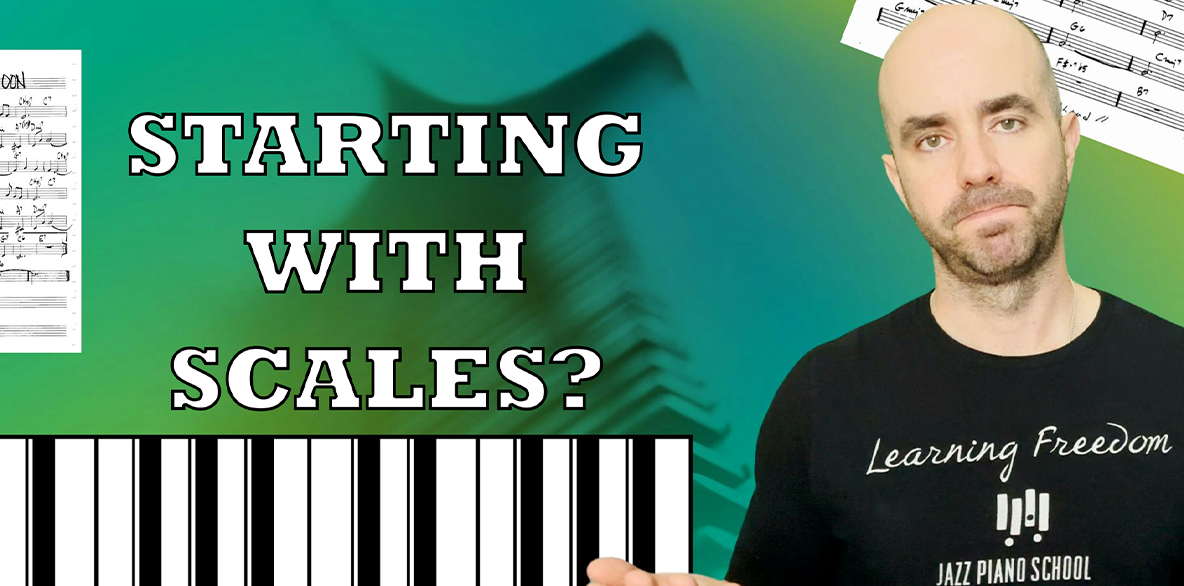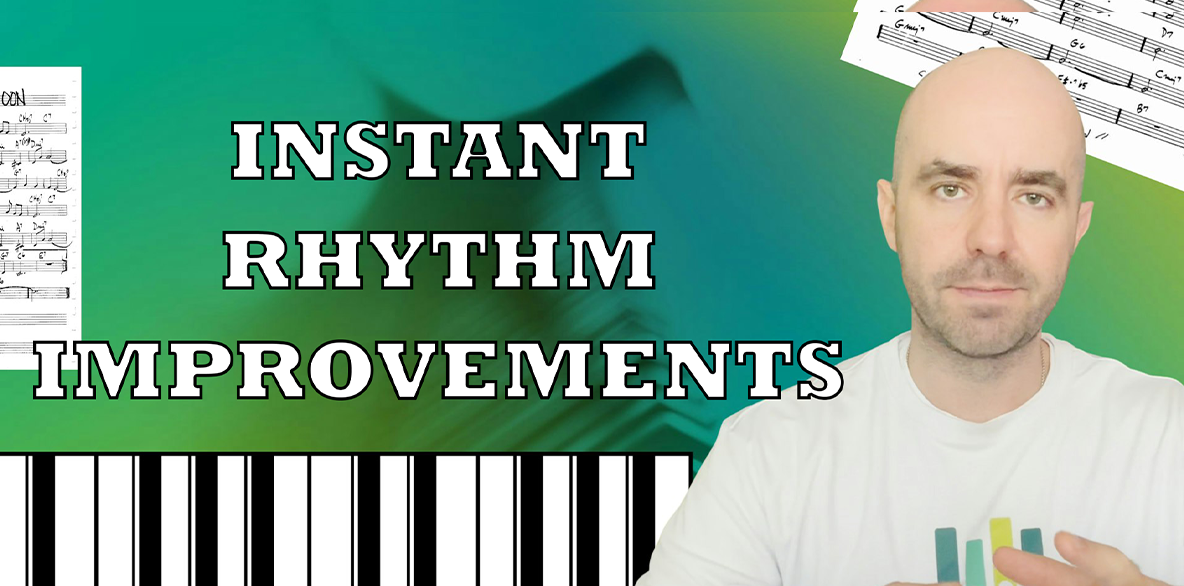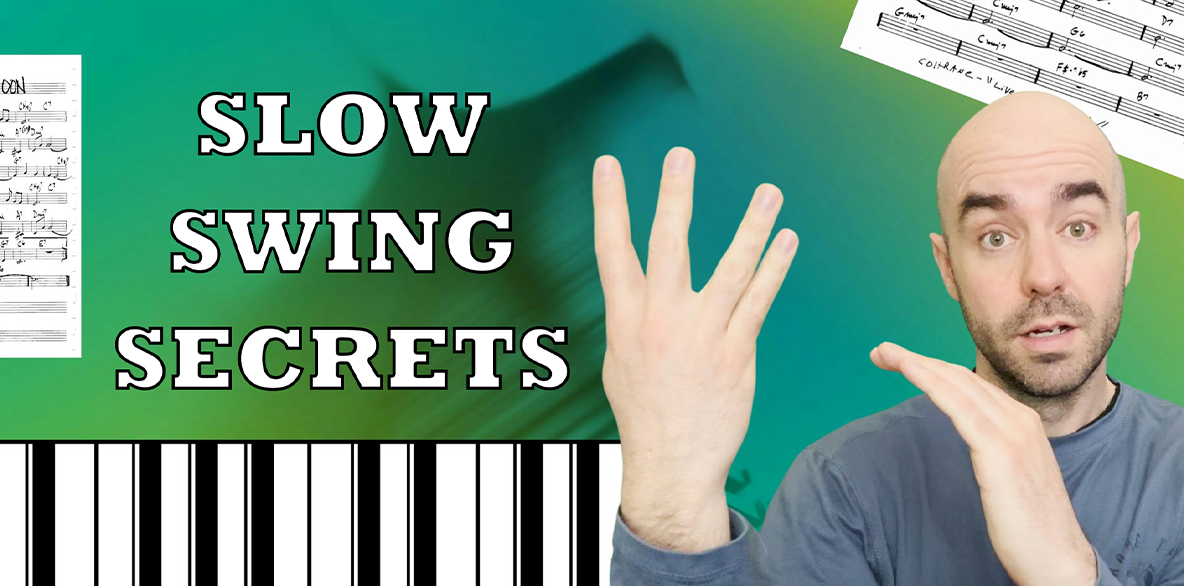What is Reharmonization? Let’s do a quick review…
Reharmonization is the process of replacing the chords underneath a melody with other chords that still work musically but have a different function. Chords share a variety of common tones that allow us to interchange them without wreaking havoc on the music. Take, for example, one of the most important harmonic relationships in the jazz language: the relationship between a dominant chord and the dominant chord a tritone away. For instance, the 3rd and 7th of C7 are E and Bb. The 3rd and 7th of Gb7 are Bb and E. Thus, we can easily substitute a dominant chord with the dominant chord exactly a tritone away, executing what’s called a tritone substitution.
The same is true in other progressions. If you have time for planning a reharmonization out (as many great arrangers, composers and pianists have done in the past), then you have the time to consider all of your potential options for alternate chords underneath a melody.
Why do people reharmonize?
- It makes a song you’ve played a thousand times sound fresh.
- It surprises the listener, making your playing more appealing and impressive.
- It challenges your ear, forcing you to be able to hear a multitude of possible chords for each and every melody note in a song.
- It gives you more emotional control over a melody. You can even assert your own ideas depending on how you’re feeling on any particular day or in any given moment.
Getting down to business…
Let’s take a melody and use it as an example so we can start doing some simple reharmonization together. Here’s the first line of the song Moonlight In Vermont. It has a simple melody which makes it a great candidate for reharmonization. Let’s take just the first two bars

and see what we can come up with for that phrase.
The first note of the melody, C, is the 6th of Eb. The question we must ask is: what other chords does C fit into? Here are a few that come to mind:
C is the 3rd of Am9
C is the 3rd of AbM7
C is the seven of Dm7
Bb is the 6th of DbM7
Bb is the 5th of EbM7 and Eb-7
Bb is the 3rd of Gm7
G is the 5th of CM7
G is the 9 of Fm9
G is the 3rd of Em9
F is the 3rd of Dm7
F is the 9 of Ebm7
F is the 5th of BbM7
G is the 5th of CM7
G is the 9 of Fm9
G is the 3rd of Em9
Once we’ve chosen all these chords, the next step is deciding which ones will work nicely together. If you are working out this reharmonization before you actually sit down to play, you’ll

have the luxury of experimenting, trying out different combinations of chords.
One important question to ask yourself is, does the progression land comfortably? Each melody has landing points, generally at the end of a phrase. You want your reharmonization to accentuate those landing points.
In our first re-harm example, you’ll notice a CM7 as the third chord. Although this process is somewhat subjective, this chordal progression arguably lands too strongly on that third note with the CM7, particularly because the phrase also ends on the same chord. Therefore, a stronger choice would be to utilize a different chord on the third note of the melody for the reharm, another chord that feels like it’s still leading to the end of the phrase but hasn’t landed yet. Take, for instance, the example below. In this example, we place an Fm7 on the third note. The Fm7 still feels unresolved and wants to keep moving along. Finally, when we arrive at the

CM7, we feel a sense of resolution.
When it comes down to it, that’s really all there is to reharmonization. However, many of us would love to be able to do it on the spot. Being able to improvise reharms is a skill that we develop over time. Here’s how we’d suggest opening up your ear to reharmonization.
How to practice improvised reharmonization:
- Take a song you know really well— so well that hearing it any other way will really mess with your ear.
- Write out all the possible chord alternates you can think of just as we did above. Make sure to be thorough so you have lots of options.
- Skip the step where you actually write out your reharmonization. This exercise is about improvisation.
- Turn on a metronome very slowly and begin playing the changes. The first time through, play the song normally.
- On the second time through the form, begin improvising your reharmonization. Pay attention to the phrases. You want to start weaker, with a question mark, but you want to end each phrase with a strong chord, a landing chord.
- If you mess up or play a reharm that sounds bad to your ear, play it a few times and figure out why it sounds bad to you. Is it the lack of resolution? Is the bass motion nonsensical? There are a variety or reasons it could sound bad, so figure it out for yourself so that you don’t make the same mistake again.
- If you like a reharm a lot, again repeat it a number of times to really get it in your ear.
- You should start to develop an ear for other places the chords might go in a II-V-I. You will actually start to notice patters as well, common reharmonizations that you’ll want to use numerous times again in the future. Many players have a series of reharmonization they tend to use when improvising, and these little colors end up being a part of who they are as players.
Reharmonizing when playing with others:
Be careful with this. If you’re playing with a bassist, they won’t be able to read your mind, so when you throw in reharms, the chords may clash with what they’re doing. From another perspective, a reharm could also throw off a horn player. It’s best to take a reactive approach rather than a proactive approach. Meaning, don’t reharm and inform the horn player what chords he or she should be improvising over. Instead, wait to hear what that person plays and then throw in some reharmonization to give them a fun color to work with, but without overpowering what they’re doing.
All in all, reharmonization is an incredibly valuable tool for any pianist. You can use it to improvise, or you can spend time arranging an entirely new reharmonized version of a song. It develops your ear and makes you a far better player. We recommend practicing the exercises proposed above. For arranging, take the time to write out every possible chord and create the perfect reharmonization. For improving your ear and improvising, practice the exercise above to create some of your own favorite reharmonization patterns over II-V-I’s. Good luck, and have fun!













One Response
HI would like to learn keys i am new to piano and just want to find my wat looking or content.
thanks
Shelikane